2 Days in Bologna: A Perfect Itinerary for First Timers
We LOVE Bologna, and think it’s a staple on any Italy itinerary for a couple of reasons (which we’ll cover below). We’ve been to Bologna twice over the past few years, with plans to return in a few months.
The main thing about Bologna that we think earns it a spot on your carefully planned itinerary is that it offers a different vibe than the other major cities in Italy.
A big percentage of the population are students at the University, and the tourists tend to be Italian (or German – they’re everywhere!), which is a stark contrast to the major cities in Italy (e.g. Rome and Florence) where you’re likely to hear more people speaking languagesother than Italian.
Another major reason? It happens to be the best Italian city for foodies.
We have two goals with this guide.
First, we want to use our experiences exploring Bologna (and Emilia-Romagna) to help you plan an amazing trip.
Second, we want to convince you to add a day or two in Bologna to your trip to Italy (we know there’s a lot to see in Italy, but we firmly believe Bologna is worth it!).
In this guide, we’re going to cover everything you need to know to spend 2 days in Bologna.
Along the way, we’ll cover our favorite things to do, see, eat, and drink in Bologna, important logistics that you should know before your trip, and more.
Throughout the guide, we’ll share our favorite finds and experiences in Bologna based on our trip to help you plan your unforgettable trip.
Sound good to you? Pack your stretchy pants and let’s get into it!
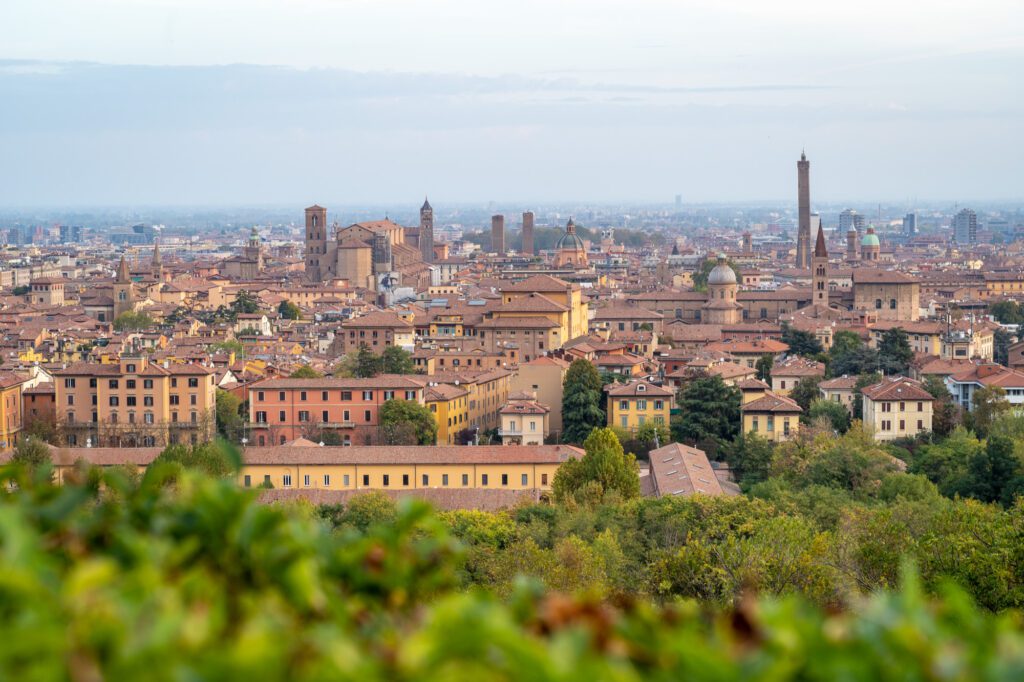
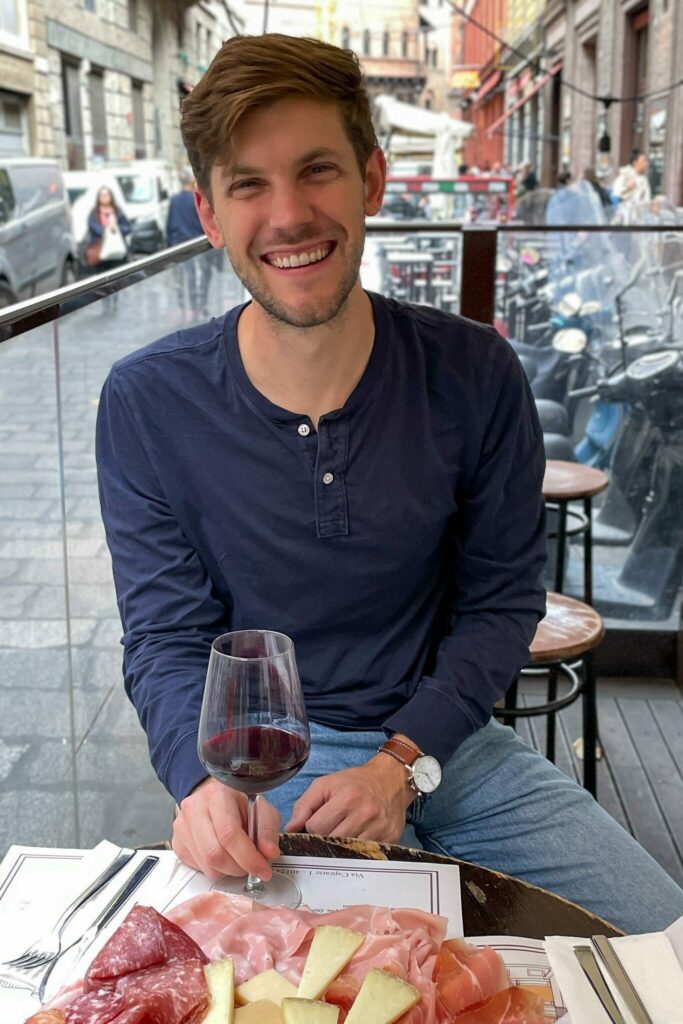
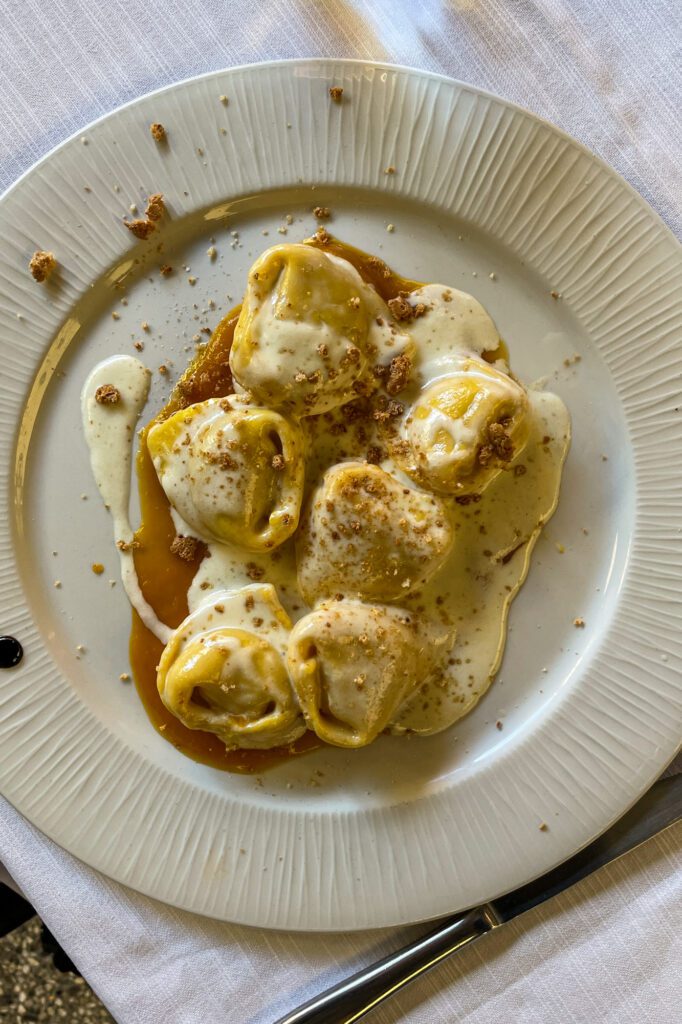
Disclaimer: Some of the links in this post, like hotel links, are affiliate links, meaning at no additional cost to you, we make a little bit of money if you click through and book. That being said, we would never recommend something to you that we don’t stand behind 100%.
Is Bologna Worth Visiting?
As we’ve already covered in the introduction, we might be Bologna’s biggest fans outside of Italy.
Which begs the question around why we have this section here, given that we obviously believe it’s worth visiting.
It goes back to our second reason for writing this guide – to convince you to add Bologna to your trip to Italy (which inevitably means cutting something else).
Which means we need to explain why Bologna is worth it over, say, an extra day or two in Rome or Florence (or a trip to Venice at all).
As our friends will attest, we love Bologna as a city, and tell everyone we possibly can that they should include it on their trip to Italy, even if it’s their first visit.
Bologna is different than most other cities on your standard “first time in Italy” itinerary.
For one thing, it’s a nice contrast from places like Rome, Florence, and Venice, where it feels like it’s all tourists and zero residents as you’re walking around the streets in the center. In Bologna, the mix is more heavily tilted towards locals and, most noticeably, students.
When we’re traveling, we like to strike a balance between the famous tourist destinations and lesser-known cities where people actually live. And, for us, Bologna fits pretty squarely in that second category.
The other reason to visit Bologna is the food.
Bologna is the best food city that we’ve been to in Italy, and it’s not particularly close in our minds.
One of the most interesting parts about traveling to Italy is having our expectations about “Italian” food completely shattered.
Here in the US, Italian food (we now know that Italian–American food is an entirely separate thing) consists of heavy sauces with lots of garlic, garlic bread, and chicken parmigiana.
The truth is that Italian food culture is vastly different from region to region, and depends a lot on the fresh ingredients available in close proximity.
For example, in Sicily, you’ll find tons of fresh seafood because you’re on an island and are perpetually near the coast. In Tuscany, it’s olives, wild boar, and sheep cheese (pecorino) because those are the ingredients that are readily available.
If you made us choose our favorite Italian food region, we’d choose Bologna.
Here’s an exercise: write down your five favorite Italian ingredients (rather than dishes). If you’re anything like us, at least one of the things you wrote down comes from Bologna’s region, Emilia-Romagna.
There’s a reason the city is known as “La Grassa” (“the fat one”). It’s about as close to heaven for foodies as you can get.
The Emilia-Romagna region is the birthplace of countless Italian delicacies, including Prosciutto di Parma, Parmesan-Reggiano cheese, Balsamic Vinegar from Modena, and some great wines (we love lambrusco, a bubbly light red). And Bologna sits at the very heart of it all.
The city is also the home of traditional Bolognese Ragù – which is unlike anything you’ve ever tasted before.
It’s a far cry away from the Americanized Spaghetti Bolognese most of us know.
I don’t know about you, but my mom made it by browning ground beef and adding canned tomato sauce, which is definitely NOT how a nonna from Bologna would make it.
For what it’s worth, we make it fairly often at home using this famous recipe, and it’s delicious every time.
In short, yes, Bologna is well worth visiting, and there’s a reason we put it in our two week Italy itinerary over other, more famous destinations in Italy like the Amalfi Coast or Cinque Terre.
Is 2 Days Enough Time in Bologna?
While Bologna is a relatively compact city where you could probably see the highlights in a day, that’s not really the vibe that we think Bologna brings to the table as Italian cities go.
We think two days is a good balance between spending enough time to really get to know the city and making sure you’re making the most of your time in Italy.
It allows you to do AT LEAST one tour – potentially two, if you want to really dive deep into the food culture – and also ensures enough time to do the walk up to the Santuario Madonna di San Luca, the church on the hill that looks out over the city.
Which, according to our friends who live in Bologna, is their favorite thing to do with visitors.
There are also some great day trips deeper into Emilia-Romagna like Parma and Modena, that are worth an extra day on your itinerary if you have the time.
You could do Bologna as a day trip (we have a separate guide for spending one day in Bologna), but you are going to miss out on some of the more interesting aspects that just don’t make sense with extremely limited time.
For what it’s worth, we originally visited Bologna years ago on a day trip from Florence, only to find ourselves craving more.
The next year, we returned for a five day trip, which was a whirlwind of filled pastas, cured meats, and as much Bolognese as we could fit into that time.
Where to Stay in Bologna
If you’re lucky enough to have an overnight stay in Bologna, you’re going to want to stay in Bologna’s city center. However, it’s a little more complicated than that, and there are two things to think about.
First, you want to be within a 5-10 minute walk of Piazza Maggiore, which is the beating heart of the city center and will be the centerpiece for many of the activities on your itinerary (just about everything, with the exception of San Luca, is about 10-15 minutes away from Piazza Maggiore).
The other thing to consider here is street noise. Which we learned on our first two nights in Bologna when we stayed in a guesthouse right above a popular bar.
Bologna is a university town – one of the oldest universities in the world, in fact – which means there’s a huge student population. On Friday and Saturday nights in particular, they get rowdy. And it can be loud.
If that doesn’t sound like your cup of tea (we’re with you!), we’d recommend avoiding the area northeast of Piazza Maggiore, which is the heart of University life in Bologna.
We have an entire guide dedicated to helping you figure out where to stay in Bologna with FAR more detail.
Here’s the basic summary.
Matt spent a few days in Bologna solo on his last trip to Italy, and stayed at Bibliò Rooms and Guesthouse.
It’s essentially a small B&B that takes up one floor on a residential building about five minutes from Piazza Maggiore. The rooms are fairly spacious with comfortable beds and private bathrooms, and it’s a good home base for a few nights in Bologna.
We also stayed at the Social Hub in Bologna, which is a hip, young-feeling hotel in Bolognina up near Bologna Centrale.
While the location is further away from Bologna’s main attractions, it is a gorgeous hotel with all sorts of great amenities (a pool, a nice gym, a bar, an events calendar, and ping pong, to name a few).
Plus, it’s about five minutes on foot from the train station, so it’s convenient in that sense.
I will say that it definitely has a younger vibe, and almost skews into hostel territory with its amenities and clientele.
If you’re looking for an apartment, look at Canonica Suites, which is where I kind of wish we had stayed.
A Perfect 2 Day Bologna Itinerary for First Timers
Over the course of two days, you’ll marvel at the architecture of Bologna, dive into the city’s role as a major University town and bastion of left wing politics, and, of course, indulge in the incredible bounty of different foods (and drinks) that Bologna and the rest of Emilia-Romagna bring to the table.
Here’s an overview of the itinerary you’ll find below:
- Day 1: An Introduction to Bologna (Piazza Maggiore, Quadrilatero, and a Walking Tour)
- Day 2: Churches, Porticoes, and a Foodie Adventure
Day 1: An Introduction to Bologna
Spend your first day in Bologna exploring the city center and its main tourist sites (to the extent that they exist in Bologna) to get a feel for the city before you dive deeper on the second day.
Begin your day by exploring some of the city’s key historic attractions, before grabbing a delicious lunch in the famous Quadrilatero district.
In the afternoon, climb the iconic Asinelli Tower for views over the city, then end your day on a guided walking tour with a local.
But First, Coffee
There’s no better way to start a day in Italy than with some delicious locally brewed coffee. And Bologna is no exception.
Finding good coffee anywhere in Italy is easy. You can’t go wrong with a strong espresso or milky cappuccino, which is served just about everywhere in Bologna.
But finding a great specialty coffee can be a little more hit-and-miss. Fortunately, I (Matt, aka resident coffee geek) am known for putting in the time and research to hunt down bright and fruity coffee around the world.
My favorite coffee in Bologna came from Aroma Specialty Coffee, a cozy little cafe hidden within the porticoes a few minutes west of Piazza Maggiore.
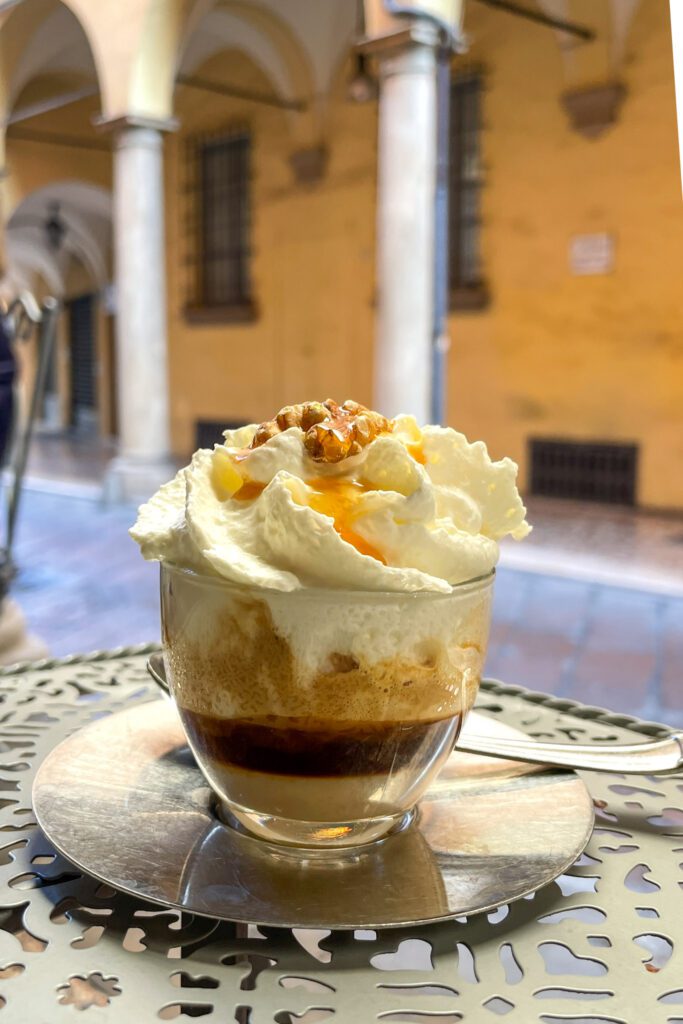
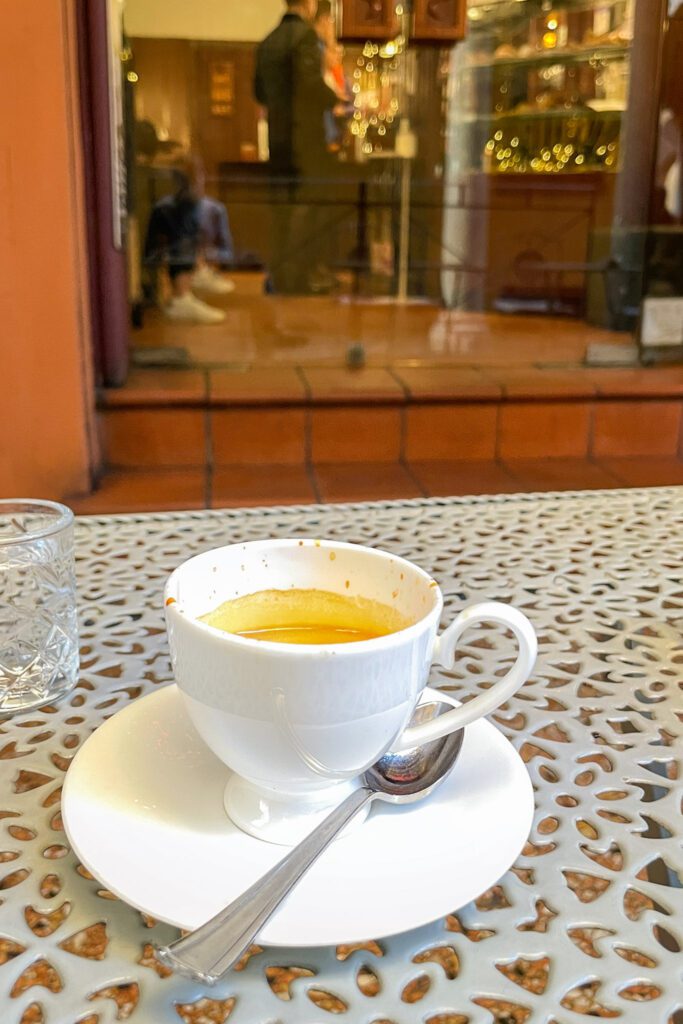
They offer a solid menu of Italian coffee roasters, as well as traditional coffee options and fun flavored drinks. There’s also a selection of freshly baked pastries and cakes available each morning for breakfast.
We went to Aroma multiple times during our stay in Bologna, including to buy a bag of beans from Gardelli, my favorite Italian roaster.
Explore Around Piazza Maggiore
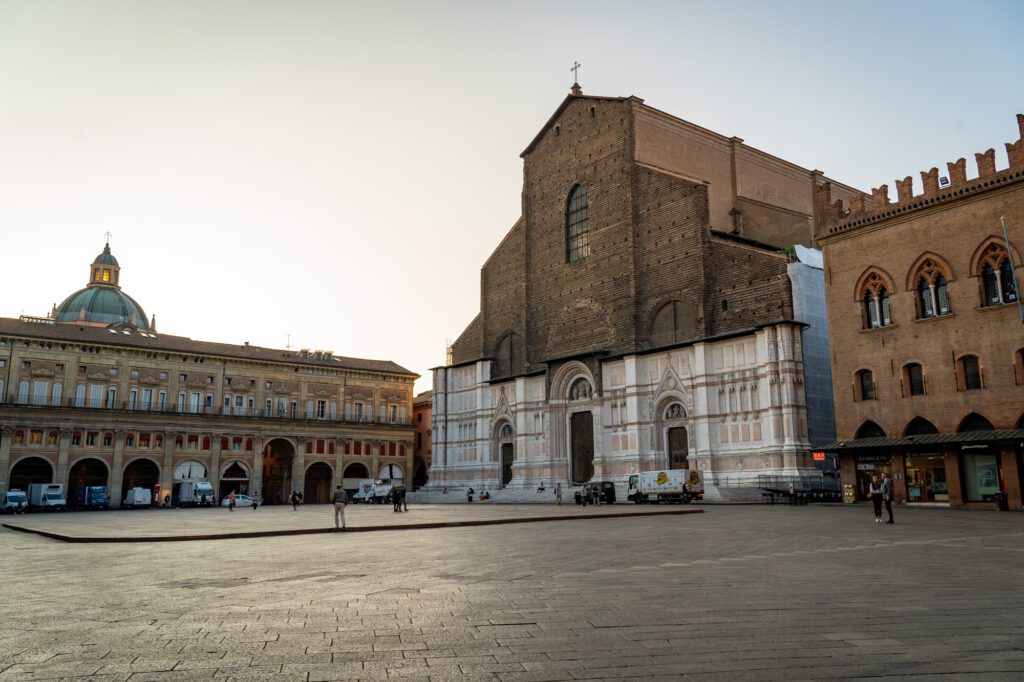
After you’re fueled up and caffeinated, head just a few minutes down the street to Piazza Maggiore, Bologna’s main square and the beating heart of the city.
The large piazza is the postcard image of Bologna and is home to many of its most impressive and important buildings, including the Palazzo d’Accursio (Municipal Palace) and the huge Basilica di San Petronio (which we’ll discuss more later).
Piazza Maggiore is also full of people at all hours. You’ll find many talented street performers in the square throughout the day, each surrounded by a small crowd, giving the area a fun and lively atmosphere.
One of my favorite things to do in Piazza Maggiore is to simply sit on the steps of the church for a few minutes, basking in the sunshine and watching the world pass by.
Here are a few places to focus on in the main piazza in Bologna.
Fontana del Nettuno
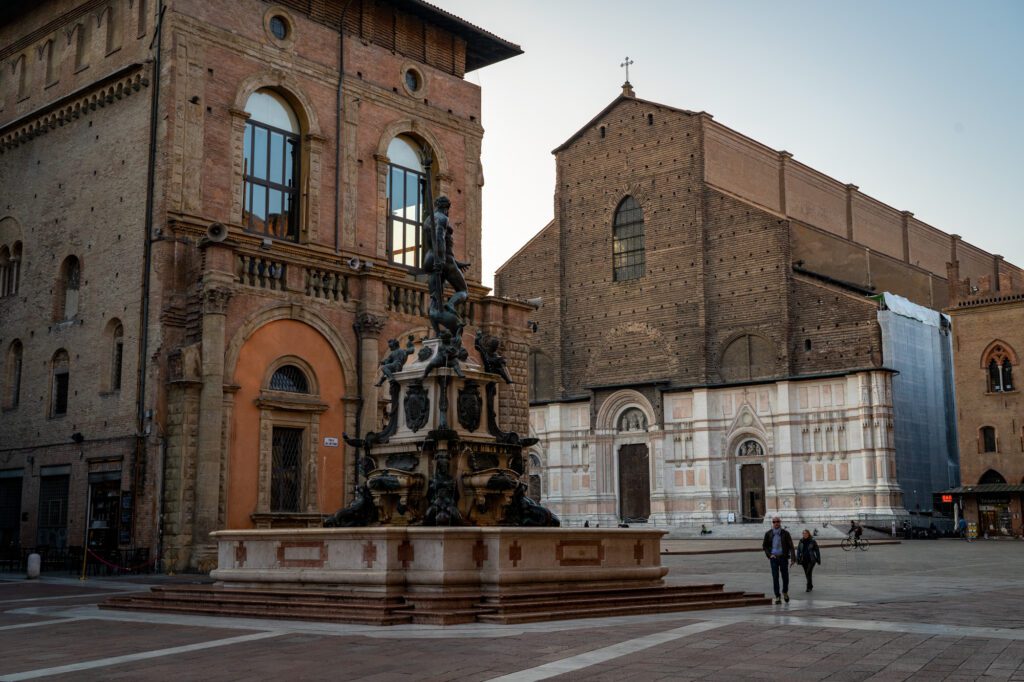
While exploring Piazza Maggiore, make sure not to miss the adjacent Piazza del Nettuno. The small connecting square is home to the famous 16th-century Fontana del Nettuno (Fountain of Neptune).
The iconic fountain is surrounded by mermaids and cherubs and topped with a large bronze figure of Neptune, the Roman god of the sea.
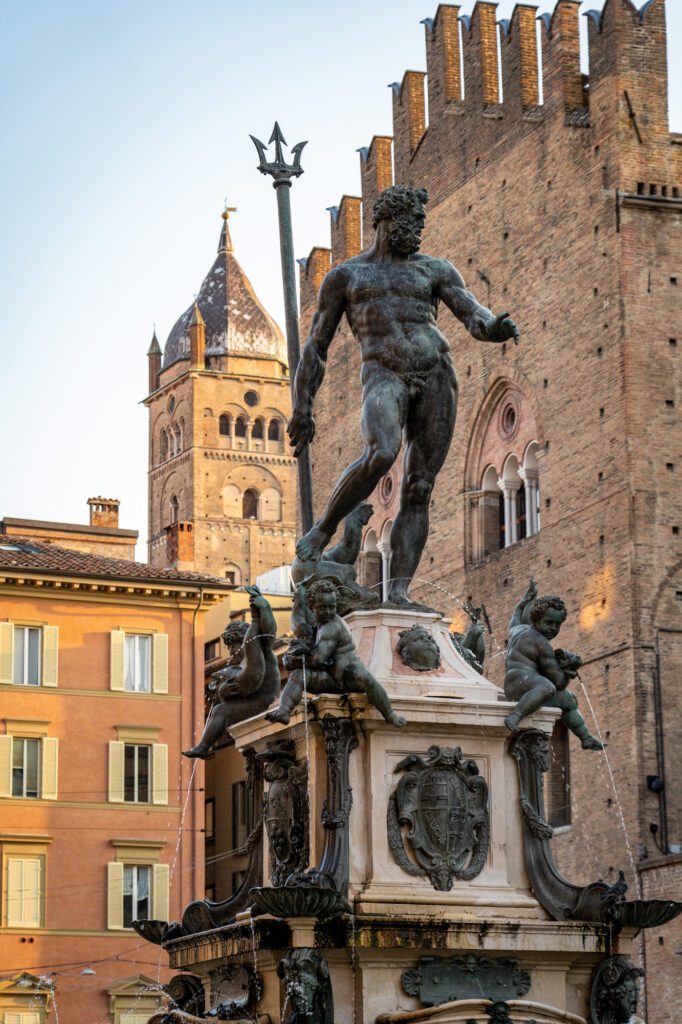
So what’s so special about this particular fountain?
Well, Bologna’s famous Neptune fountain holds several secrets. The first of which is a rather risqué optical illusion…
The fountain was commissioned to symbolize Pope Pius IV’s power at the time, as he ruled the land like Neptune ruled the seas. However, the Pope had his concerns about the statue and requested the artists make the nude God a little less indecent.
The artist, Giambologna, was annoyed by the church’s censorship but obliged anyway and got his revenge in secret.
He sculpted the statue so that when it’s viewed from a particular angle, Neptune’s thumb makes the God appear particularly well-endowed.
You can see this optical illusion by standing on a black stone in the piazza behind the statue, which is known as ‘“the stone of shame” by locals.
Another, less crude, secret of the statue is that it inspired the logo of a very famous car manufacturer. Can you guess which one?
Neptune’s trident inspired the Maserati brothers, who were originally from Bologna. It became the emblem for their first-ever car.
Over 100 years later, the 3 pronged trident remains the logo of one of the world’s most luxury car brands, Maserati.
Basilica di San Petronio
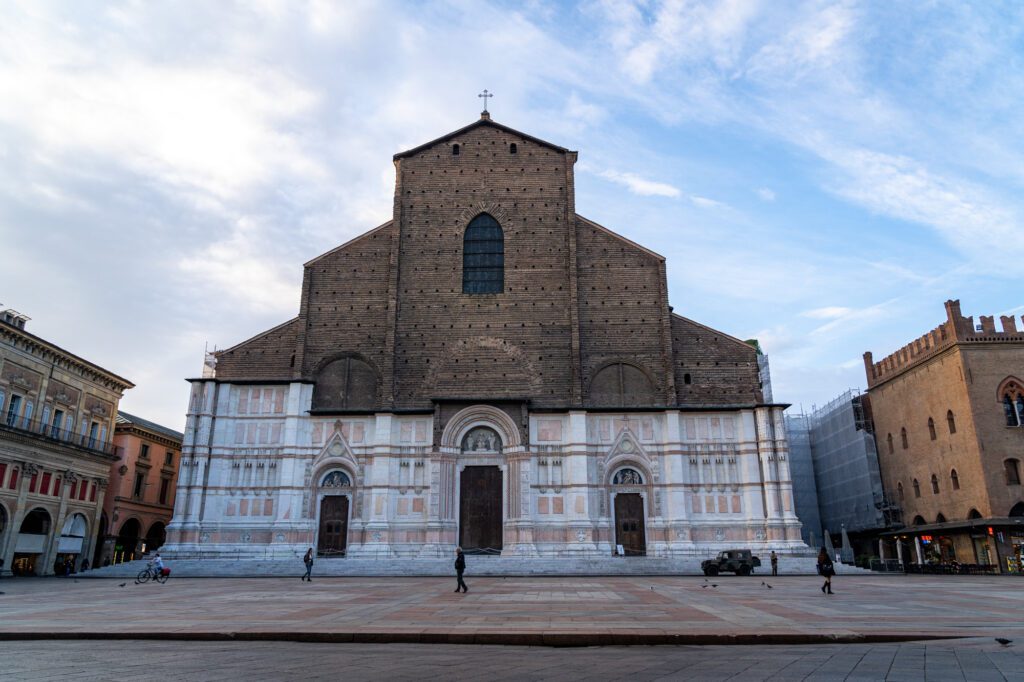
Another of the most important landmarks around Piazza Maggiore is the monumental Basilica di San Petronio.
Known for its half-finished marble facade, the huge 14th-century church is a beautiful example of Italian Gothic architecture and one of the city’s most important buildings.
But why is the exterior only partially finished?
Basically – and this is the very brief Drunk History version – Bologna tried to build a humongous church that would outshine all others in Italy, including The Vatican.
Unsurprisingly, the Catholic Church did not support this idea and put an end to the construction, using some slightly underhanded tactics. This has resulted in the half-marble, half-brick façade being left unfinished for hundreds of years.
As well as admiring its unique façade, Basilica di San Petronio is also worth going inside to see. It’s free to visit the church. But you’ll need to pay €2 to take photos.
From inside, you can really appreciate the size and grandeur of the enormous church. Bologna had already managed to build a lot before construction was halted.
There are 22 impressive chapels to explore and many priceless artworks. The Basilica also has the longest indoor meridian line in the world, at 67 meters long.
Cattedrale Metropolitana di San Pietro
The second, less imposing (but more important) church in Bologna is located just a short walk away down the city’s main avenue of Via dell’Indipendenza.
Cattedrale Metropolitana di San Pietro may not be quite as large as Basilica di San Petronio, but it is the city’s official cathedral, so it’s definitely worth visiting too (plus, it’s free).
The original cathedral dates back to the 10th-11th centuries but has been altered dramatically over the years. In the 1700s, a striking Baroque red brick facade was added, which is symbolic of Bologna. One of the city’s (many) nicknames is “La Rossa” (the red one).
The cathedral’s grand interior is also free to visit. Inside are many paintings by famous Italian artists, while the church museum is a treasure trove of important religious relics from the building’s 1,000 year history.
You can also climb the cathedral’s bell tower, which at 70 meters high is the second tallest in the city. It costs €5 to climb to the summit and enjoy the amazing views from the top.
Although, the hours are a little hit or miss and definitely not what they have posted – at least not when we were there.
Lunch in Quadrilatero
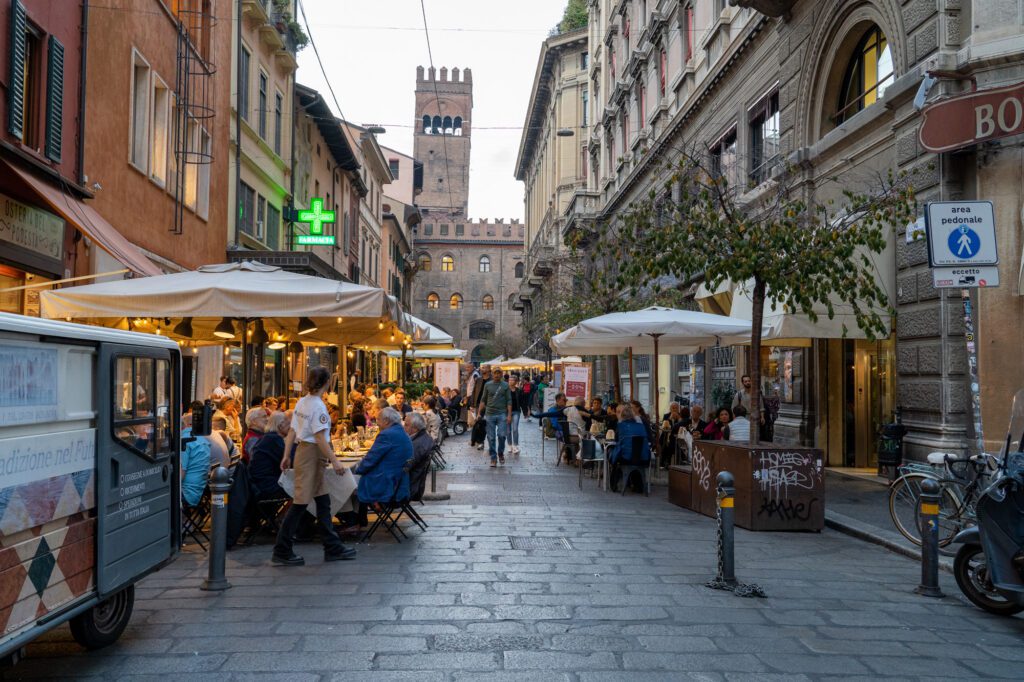
By the time you’ve finished exploring Bologna’s historic highlights, you’ll probably have built up quite the appetite. So it’s finally time to dive into the city’s famous food scene.
For lunch, head to the Quadrilatero district, which sits just off Piazza Maggiore.
This charming little neighborhood consists of many narrow pedestrian-only streets packed with countless market stalls, delis, shops, cafes, and restaurants.
Not only are there plenty of great places to grab a tasty lunch, but you can also browse for edible souvenirs to take home with you.
We find that food-related gifts are always the biggest hit among friends and family, and this is a good place to find them.
You can’t go too wrong no matter where you choose to eat in Quadrilatero, but here are a few of our favorites for some guidance:
- Zerocinquantino is a delightful little wine bar and restaurant known for its charcuterie plates (cured meats and cheeses) and freshly prepared sandwiches, piadina, and tigelle (traditional flatbreads from Emilia-Romagna). It’s perfect for those wanting a light, local lunch rather than a hearty meal. The bar is consistently bustling with both locals and tourists, so you may need to be assertive to get a table during peak lunch hours.
- Drogheria Gilberto, located nearby, is another wine bar and shop that we loved. They specialize in small plates, with a wide selection of Italian meats and cheeses. This spot may appeal more to adventurous eaters – when we inquired about one of the meats, the server cryptically replied, “You don’t want to know” before we pressed him into an answer. For those with a sweet tooth, the shop also has a fantastic assortment of Italian chocolates and sweets.
- Tamburini is an iconic deli and wine bar (separate spaces that are right next to each other) that has been a beloved fixture in the Bologna food scene since it first opened in 1932. The bar has a nice assortment of Italian cured meats and cheeses, along with authentic Bolognese specialties and an array of homemade desserts. The shop is also a great spot to buy some locally packaged delicacies, including traditional cold cuts, cheeses, and regional wines (we discovered our favorite bottle of Lambrusco here).
Climbing the Asinelli Tower
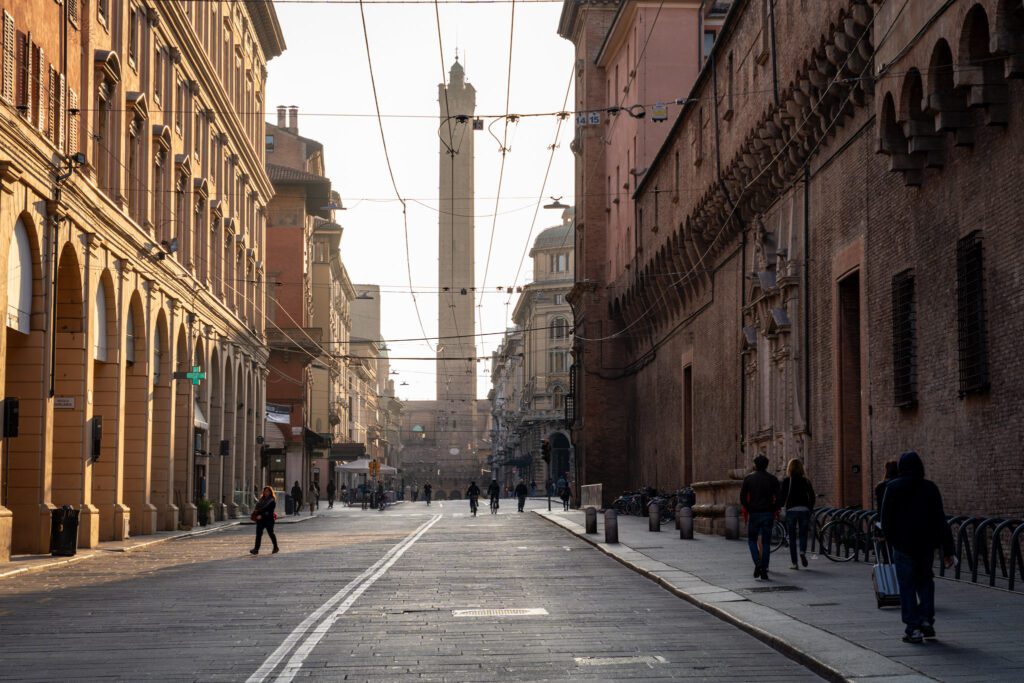
If you don’t manage to climb the bell tower of San Pietro in the morning, don’t worry. Your first stop after lunch is an even taller tower (the tallest in the city!) – the Torre degli Asinelli.
This is the first thing we ever did in Bologna.
We climbed the tower with our friends who lived in the city for a while but had somehow never gone up there (kind of like the Space Needle in Seattle – sometimes you just don’t do the touristy stuff until people come from out of town).
During the Middle Ages, Bologna’s skyline was filled with many slender towers, serving both defensive and symbolic purposes for the wealthy families that commissioned them.
Over the centuries, most of these towers were dismantled (or toppled over), leaving only a handful still standing today. Among them, “Le Due Torre” or “the two towers,” have become iconic parts of Bologna’s skyline.
Asinelli is the taller of the two at over 97 meters and is the tower you can climb for spectacular panoramic views over the city.
Neighboring Garisenda once stood at the same height, but had to be lowered to 47 meters due to its increasing lean. It’s even been nicknamed “the Leaning Tower of Bologna.” Despite the correction, you can no longer climb Garisenda.
To reach the top of Asinelli, you’ll need to climb 498 steep steps up a narrow wooden staircase that winds its way around the inside of the tower. It’s certainly not the easiest climb, but it’s worth it for the breathtaking views!
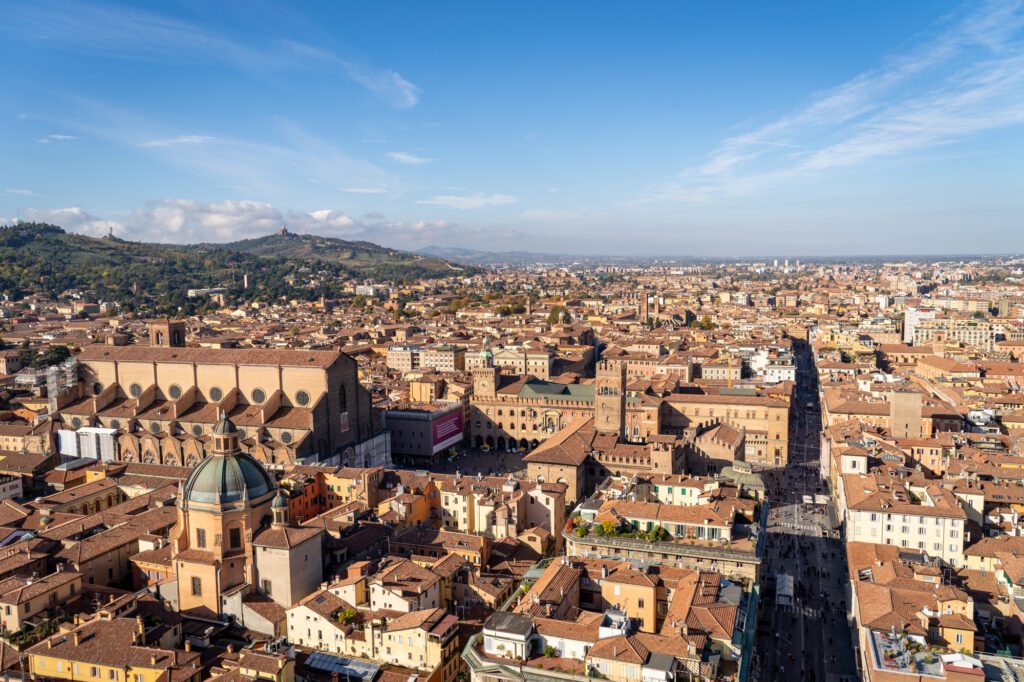
The tower costs €5 to climb. Due to the narrow staircase, only a limited number of people can climb the tower at a time, so it’s best to book your tickets in advance.
When booking, you’ll need to pick the time slot you plan on visiting.
Get Introduced to Bologna with a Walking Tour
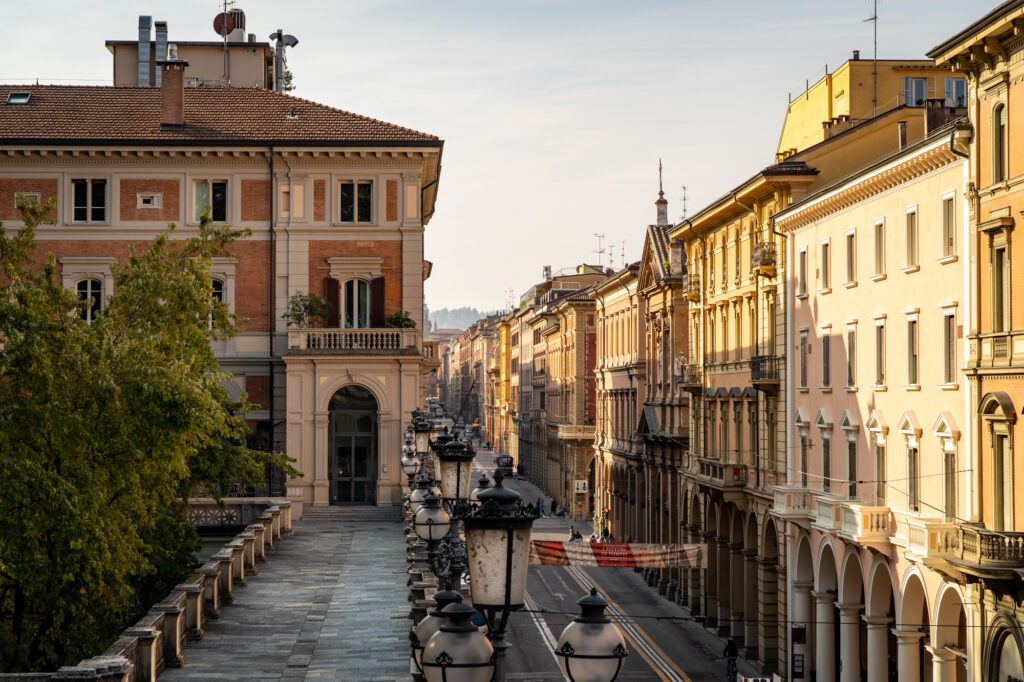
Finish your first afternoon with a guided walking tour of Bologna. On a walking tour, you’ll get to stroll around the city and learn more about Bologna’s long and fascinating history from a local.
Now, usually I recommend starting off with a walking tour, but the particular availability and schedule of the one we did and enjoyed didn’t work out in this case, so an afternoon tour it is!
We did this walking tour and it was a great introduction to the city with Addy, an extremely friendly guide who has lived in Bologna for many years after falling in love with it during his studies.
A couple of stops on this tour will be places you’ve already visited, such as Piazza Maggiore.
But you’ll also discover many other areas of the city, including Bologna’s student quarters, the University of Bologna, Piazza Verdi, and the Jewish ghetto.
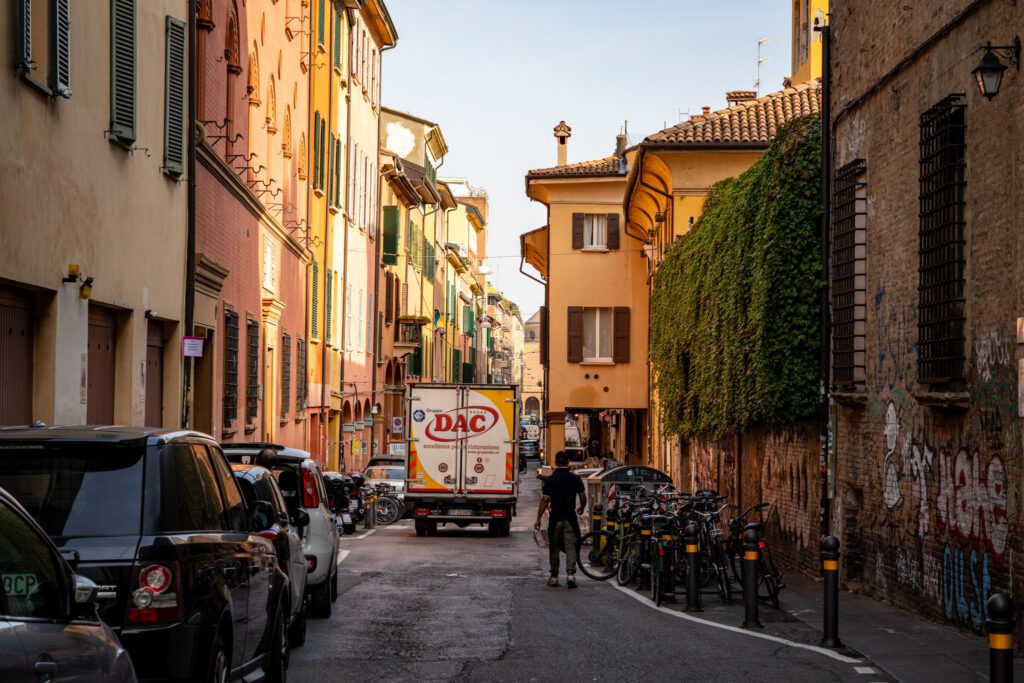
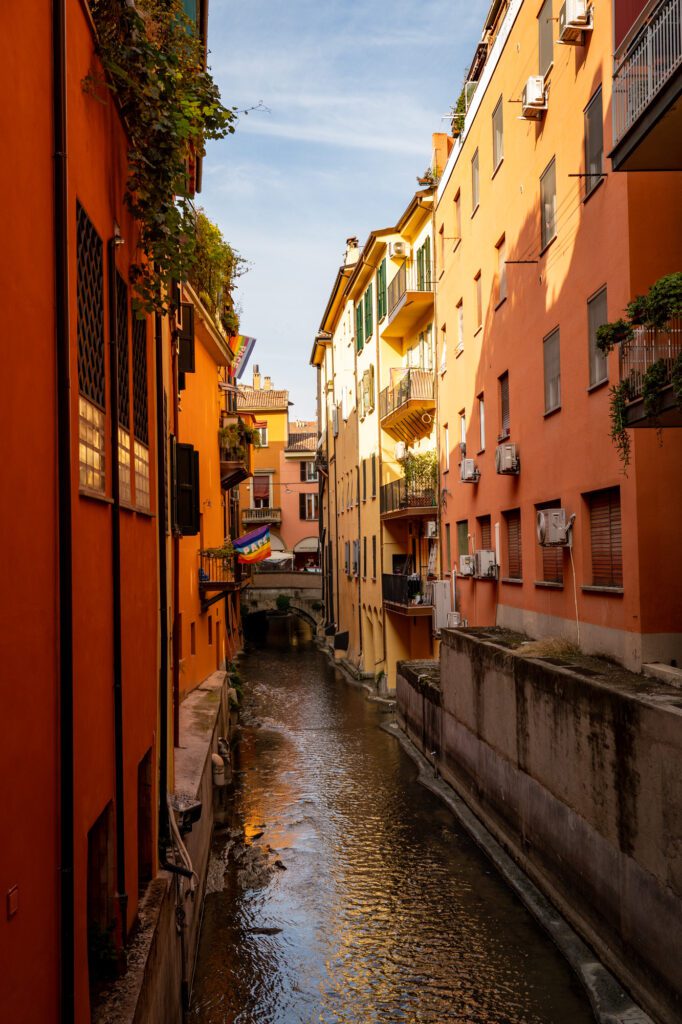
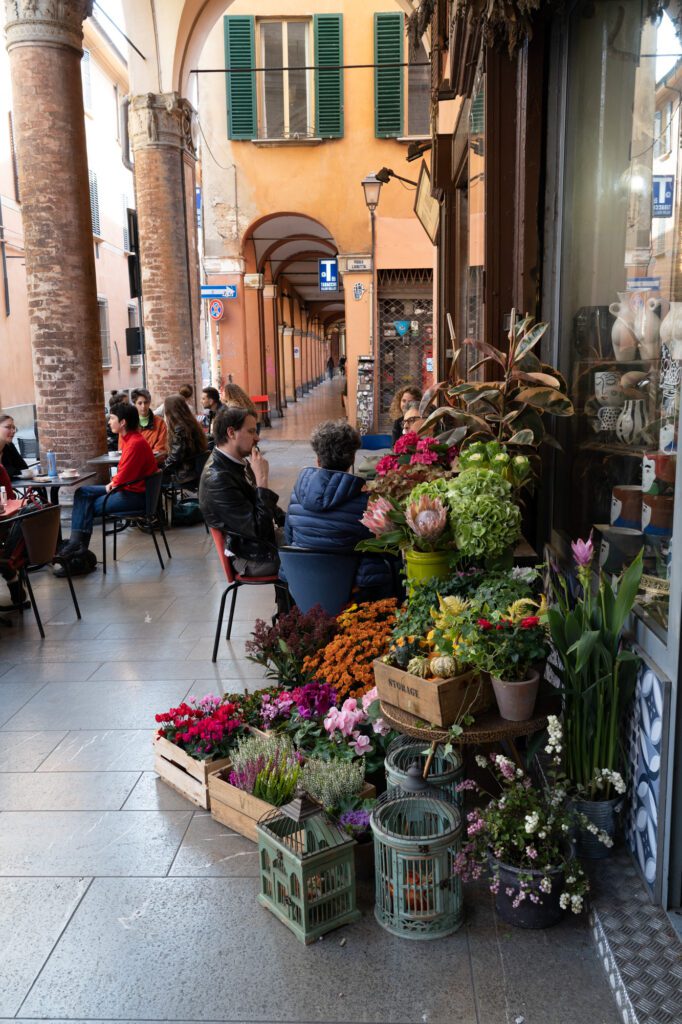
A guided walking tour also allows you to ask a local anything you want. Whether you have questions about the city’s architecture and history or simply want to know where the best places to eat and drink are, this is your opportunity.
Make the most of this time. The other people on your tour are sure to be interested in your questions too.
Dinner & Cremeria La Vecchia Stalla
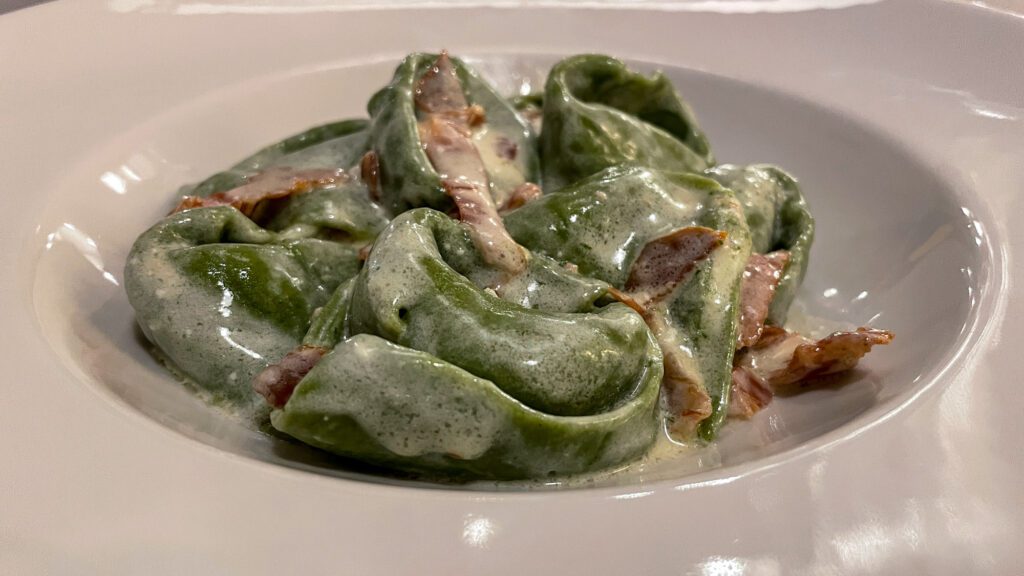
End your first day in Bologna with some delicious traditional Bolognese cuisine, featuring the likes of handmade pasta, complex ragus, and tasty filled pasta.
A few spots we’d recommend for dinner in Bologna:
- Trattoria di Via Serra: A simple Italian Trattoria with cozy decor and a menu of freshly prepared homestyle Bolognese cuisine made with ingredients from small local producers. Open for dinner from Wednesday to Saturday. The restaurant is small yet popular so it’s best to make a reservation in advance.
- Bottega al Pappagallo: A historic restaurant that opened in 1919 and has become famous for its high-quality, traditional, fresh pasta (especially the tortellini). Since 2022 the restaurant has turned its focus to take-away dishes. Not open on Sunday evenings.
- Noi at Mercato delle Erbe: A small spot selling tasty handmade pasta in Mercato delle Erbe, the largest covered market in Bologna. Also known for its Crescentina Fritte (aka Tigelle, or fried flatbread), and Polpette (meatballs).
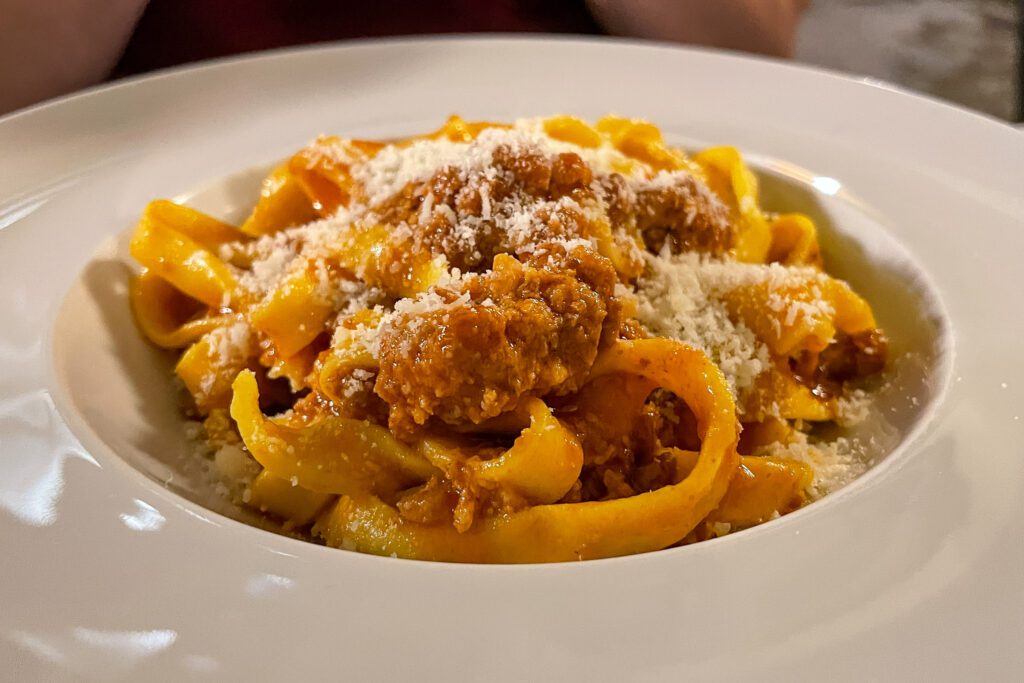
If you have enough room left after dinner, head to Cremeria la Vecchia Stalla. Several locals recommended we visit here and it was a fantastic suggestion!
The ice cream shop has a huge variety of flavors to choose from, from more traditional flavors like pistachio and stracciatella to many unique and interesting flavor combinations.
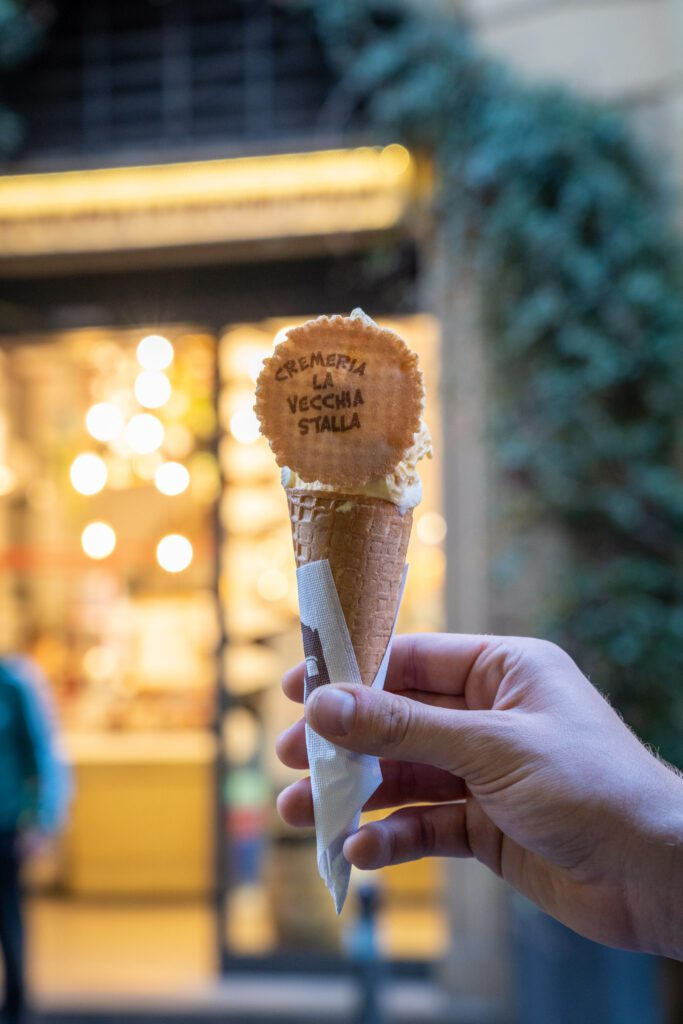
We also had a couple of glasses of wine sitting under the porticoes at Vineria Favalli, which is right across from the ice cream place. We loved sampling their delicious local wines (despite the slow service).
For beer lovers, head around the corner to Birreria Popolare, which has a wide selection of local and imported beers (both from Italy and beyond).
Obviously, as someone with Celiac Disease, my ability to eat and drink in Bologna is a little more complicated. So for more on where to eat and drink, I’d point you over to Coral at Curious Appetite (who also runs food tours in Bologna!).
Day 2: Churches, Porticoes, and a Foodie Adventure
Start your second day in Bologna with a stroll around the unusual Seven Churches Complex, before enjoying the best of Bologna’s world-class food scene with a local food tour or cooking class.
Finish your afternoon by hiking through the porticoes up to Santuario Madonna di San Luca then heading to La Serre dei Giardini Margherita for a relaxing evening drink.
Breakfast at Forno Brisa
For breakfast, head to Forno Brisa, a small chain of independent bakeries with 5 locations in Bologna. We visited their store on Via Galliera, which is a 10 minute walk (ish) from Piazza Maggiore.
The bakery sells handcrafted breads, delicious focaccia, freshly baked pastries, and – most importantly! – great specialty coffee.
Perfect for a quick breakfast before a busy day of exploring. You can grab something to go or sit at one of the small tables inside.
Oh, and don’t forget to pick up one of their famous “fanculo la dieta” stickers (we’ll let you translate that one!).
The Complesso delle Sette Chiese
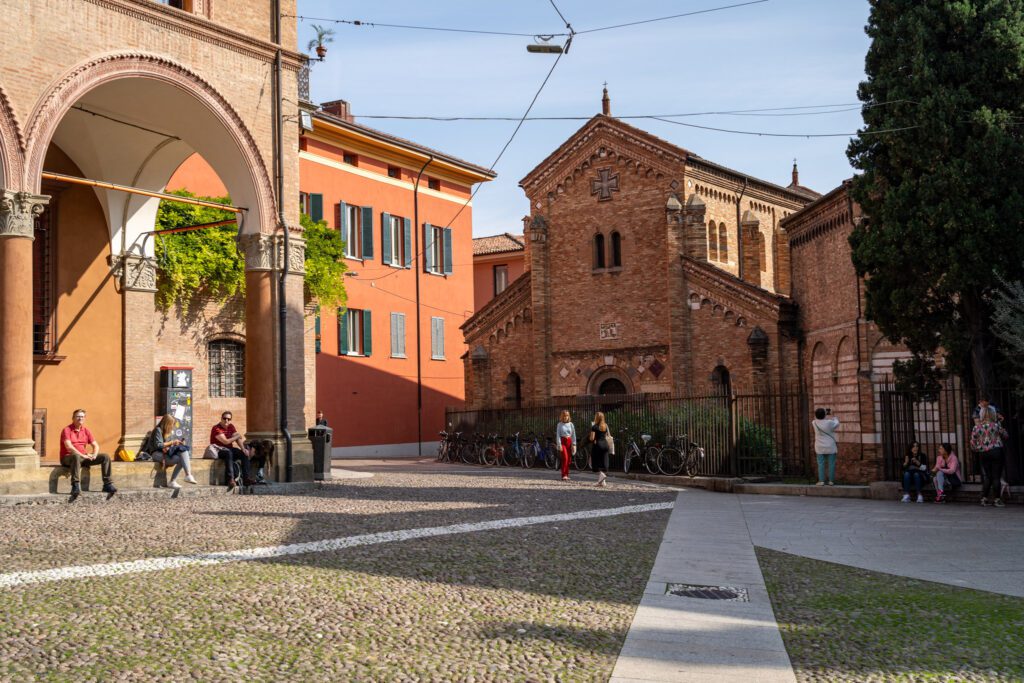
After breakfast, head to the Complesso delle Sette Chiese (Complex of the Seven Churches), a unique religious compound that comprises a network of interlinked churches, chapels, courtyards, and crypts in central Bologna.
The many religious structures were constructed across multiple centuries and its origins and meaning remain a mystery.
One legend claims that the original structure was built by Bishop Petronius in the early 5th century.
He wanted something similar to the Church of the Holy Sepulchre in Jerusalem, with structures representing places in the Holy Land that recall the Passion, Death, and Resurrection of Jesus Christ.
Today the unusual complex is a popular tourist destination that you can enter for free to explore the different periods of Bologna’s history.
Around the complex, you’ll find evidence of Roman, Byzantine, Lombard, Ottonian, and Benedictine influence. There’s also a museum with frescoes, sculptures, and artworks from various eras.
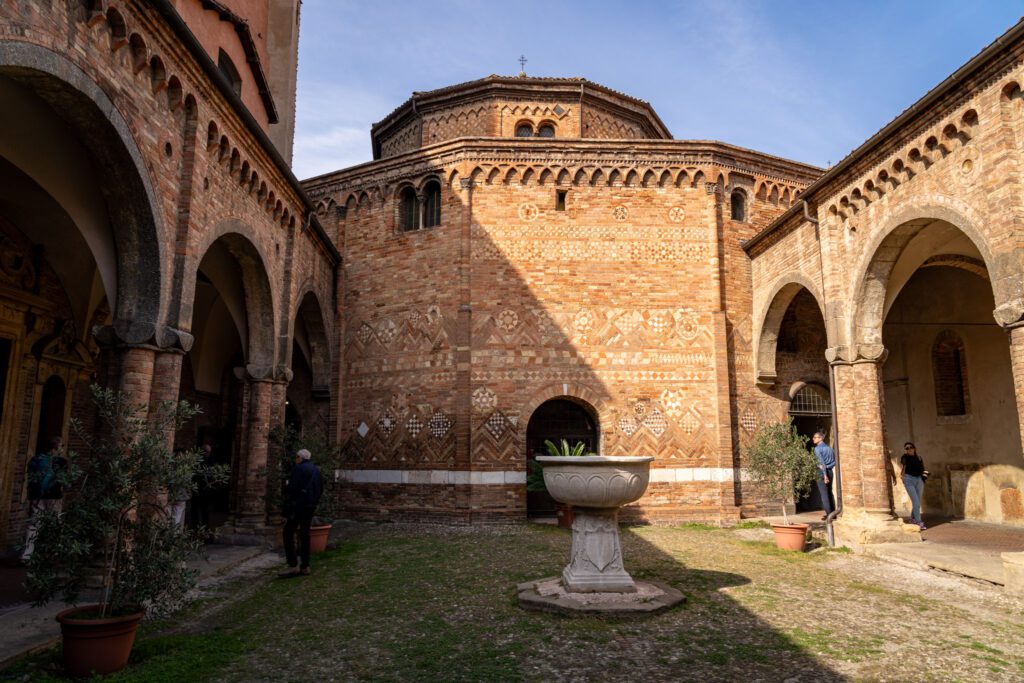
You can purchase a small guidebook explaining what you’re looking at for just €2.
We’d recommend getting it as signage in English is limited and it’s useful to know what you’re looking at – otherwise, you’ll be wandering around pretty aimlessly.
Choose Your Own Adventure: Food Tour vs. Cooking Class
By this point you may be wondering – but what about all of the delicious food you’ve been raving about?
And yes, we admit, this itinerary hasn’t been that food-heavy… So far! But don’t worry, today is your opportunity to really dive deep into the city’s world-class culinary scene.
We believe there’s no better way to experience a city’s food scene than spending a few hours with a local and seeing it through their eyes.
Taking a foodie experience with a local can help give you a deeper understanding of the connection between a city’s history, culture, and food.
Plus – most importantly – a local will take you to places to eat and drink that you would never normally discover on your own.
Bearing that in mind, we have two suggestions for how to spend your second afternoon in Bologna; a local food tour or a local cooking class.
Option 1: Take a Bologna Food Tour
There’s certainly no shortage of fantastic food tours in Bologna.
Unfortunately, we had to skip it as Matt has Celiac Disease and can’t eat gluten, which is present in basically everything that we would have eaten on the tour.
The 4-hour tour includes tastings of Balsamic vinegar of Modena and an aperitivo of cold meats, Parmigiano Reggiano, and Lambrusco – a delightful bubbly and light red wine native to Emilia-Romagna.
You’ll also enjoy 3 homemade pasta dishes for dinner, artisanal Italian gelato, and local natural wine tasting in an old enoteca.
Option 2: A Cooking Class in Bologna
Another fantastic way to embrace Bologna’s world-class culinary scene is with a local cooking class.
We love cooking classes as a way to immerse ourselves in the food culture of a place we’re visiting.
We’ve done them in Spain, Colombia, Mexico, and here at home in the US.
Unfortunately, since Matt has Celiac Disease and can’t have even a crumb of gluten, Italy isn’t a great place to do that given the prevalence of pasta, pizza, and various breads (having made gluten free pizza and bread, we know that flour ends up EVERYWHERE).
But you should!
This is the Bologna cooking class we’d choose if given the choice. Hosted by a local innkeeper, this small group class teaches you how to make two types of local pasta (tagliatelle and tortellini) and authentic Bolognese ragù in a traditional Italian kitchen.
You’ll also get to taste some local wines from the Emilia-Romagna region while enjoying your delicious homemade pasta.
Hike up to the Santuario Madonna di San Luca
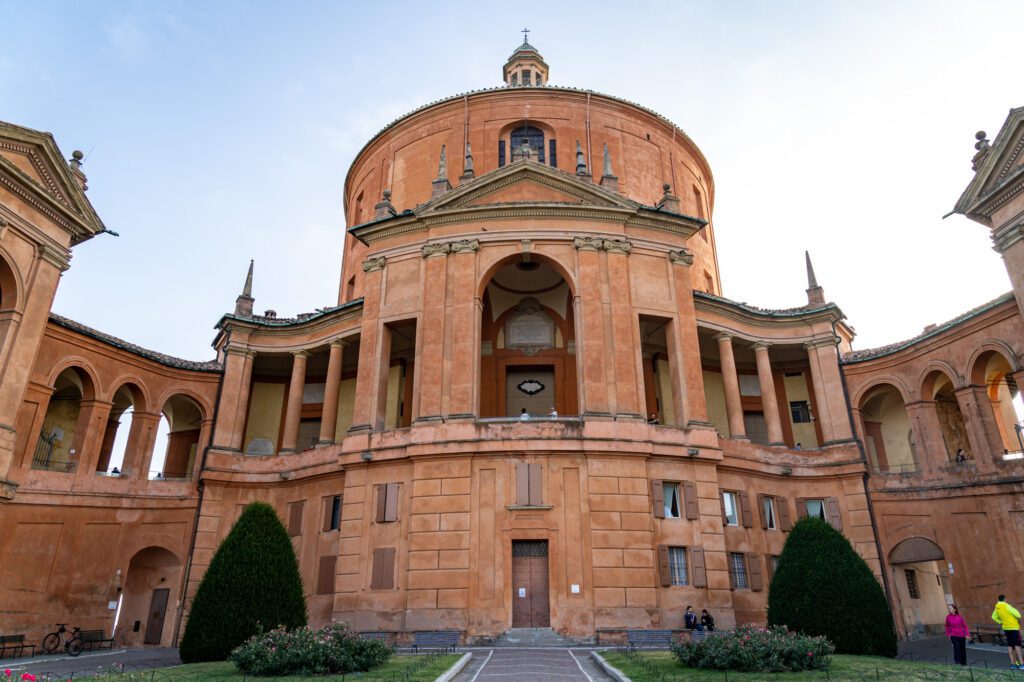
With the rest of your afternoon, work off your lunch with a leisurely walk up to the iconic Sanctuary of the Madonna di San Luca.
The grand baroque church sits on a hilltop above the city and is a popular pilgrimage spot among both locals and tourists. It offers some of the best views over Bologna, so you can take in the picturesque city from a different perspective.
To reach the church, you’ll need to walk through 666 porticoes (someone has a sense of humor) along a long winding walkway that leads from the edge of the city. At 3.8 km in length, the covered walkway is the longest of its kind in the world!
The full walk up takes around 45 minutes to an hour, depending on your pace. Along the way, you’ll be treated to some spectacular views back towards Bologna and out over the hills surrounding the city.
Once at the top, you’ll get the best view of them all, which is from the church’s large dome.
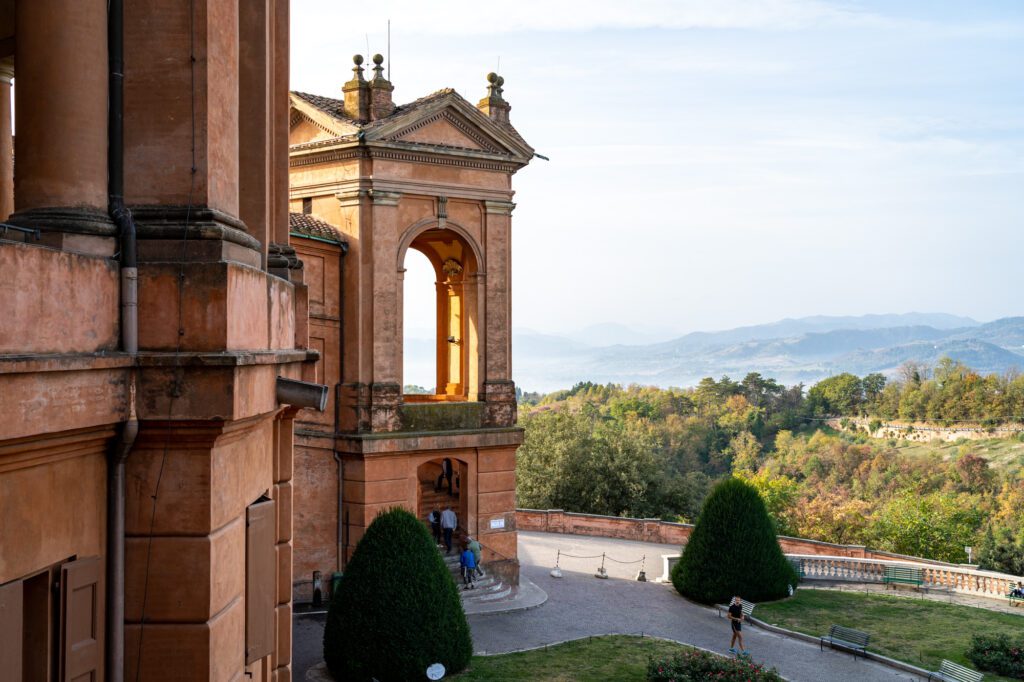
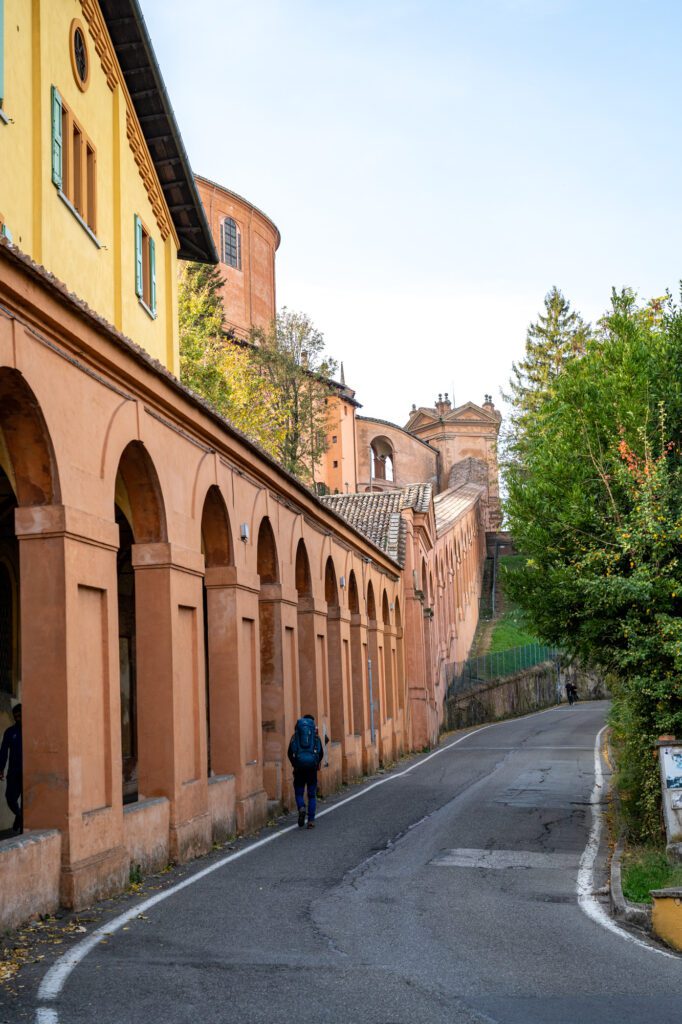
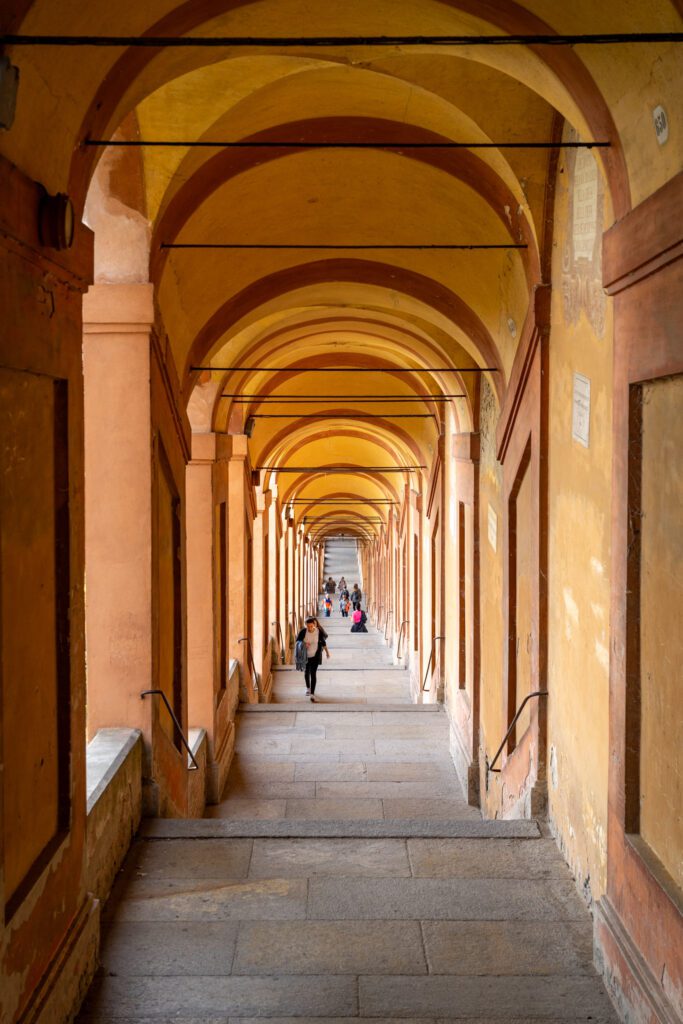
Inside the church, you can also admire many historic artworks, including the sacred image of The Madonna of San Luca that gave the church its name.
If the full uphill walk is too much for you, another option is to take the tourist train either one way or both ways.
The San Luca Express is a charming little tourist train that departs from Piazza Maggiore and travels through the city and up to the Sanctuary. A round ticket costs €12 per adult and €6 for kids, and includes an audio guide.
La Serre dei Giardini Margherita
End your day at the charming La Serre dei Giardini, a cool renovated greenhouse sitting within Giardini Margherita, Bologna’s largest and most popular park on the southern end of the city.
The greenhouse has been turned into a cool community gathering space, with an art gallery, event space, kids area, and restaurant.
The unique restaurant serves an all-day menu of delicious dishes using local seasonal produce. There’s also a great wine menu!
During the cooler months, you can sit inside the glass-roofed greenhouse. While on warmer summer evenings, grab an outdoor table and soak up the string-light-filled ambiance.
What to Do with More Time in Bologna
As we mentioned at the beginning of this itinerary, there’s no shortage of things to do and see to fill several more days in Bologna, ESPECIALLY if you include the rest of Emilia-Romagna.
Eat More!
Our first recommendation would be to do whichever you didn’t do out of the cooking class and the food tour we mentioned above. Then, eat more tortellini, ragu, and cured meats, and drink more Lambrusco.
Every extra day you spend in Bologna gives you another 24 hours to eat some of the best food in Italy. Make the most of every second of it!
Dive Deep into Parmigiano-Reggiano with Claudio
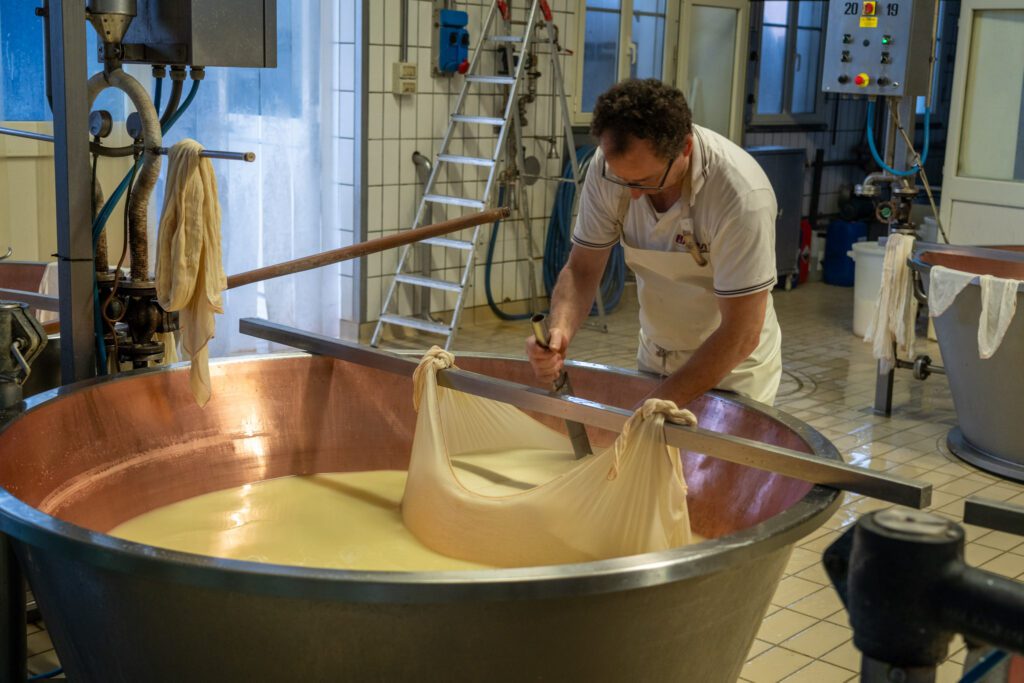
If you want to learn even more about Italian cuisine, Bologna is a great base for exploring the many farms and producers of the Emilia-Romagna region, aka the food capital of Italy.
And this is our second STRONG recommendation for things to add to a visit to Bologna, but it didn’t make sense to fit it into the main itinerary above because it takes the better part of a day.
We did this organized day trip to visit a cheese producer in Reggio Emilia on our last visit to Bologna and it was incredible.
We’d even go as far as saying it was the highlight of our recent trip to Italy.
On the tour, we got to learn all about how the famous cheese from Reggio-Emilia (which most people know as Parmesan) is made.
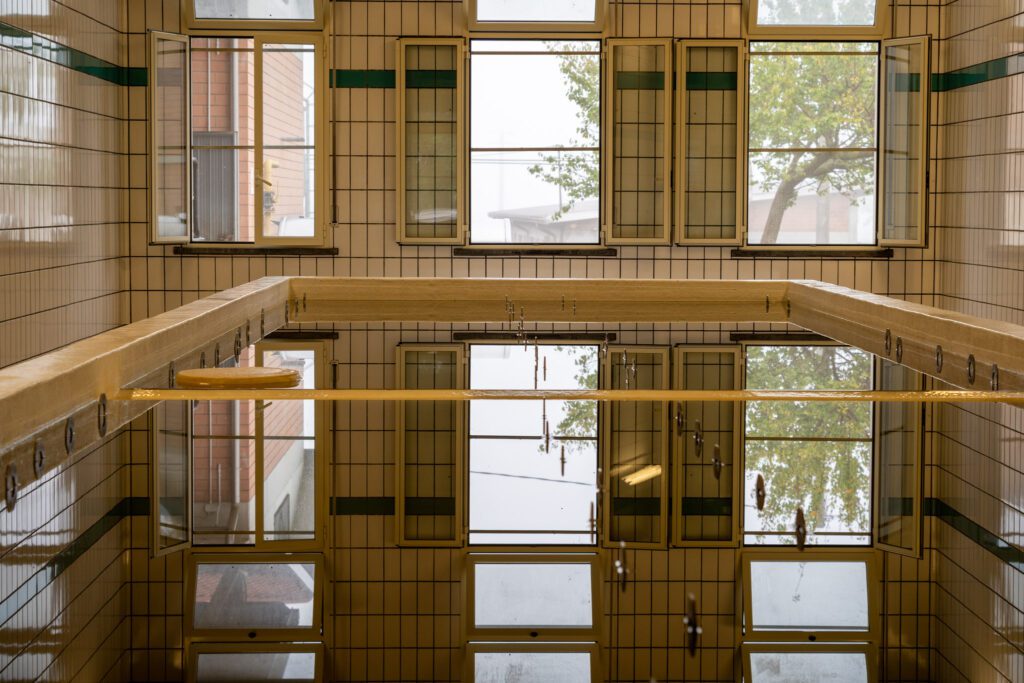
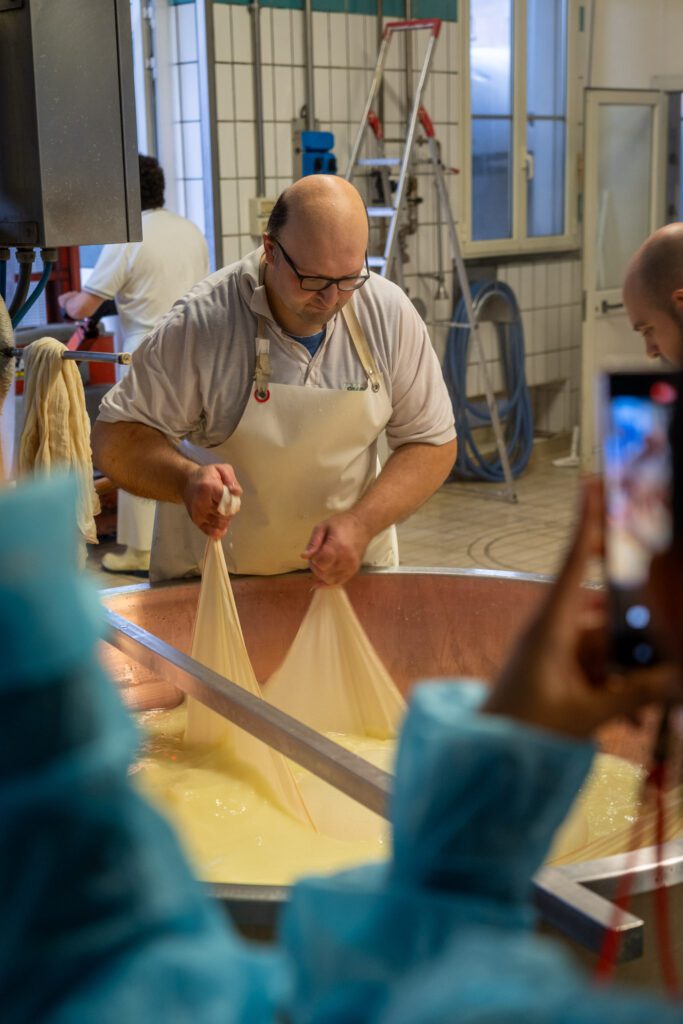
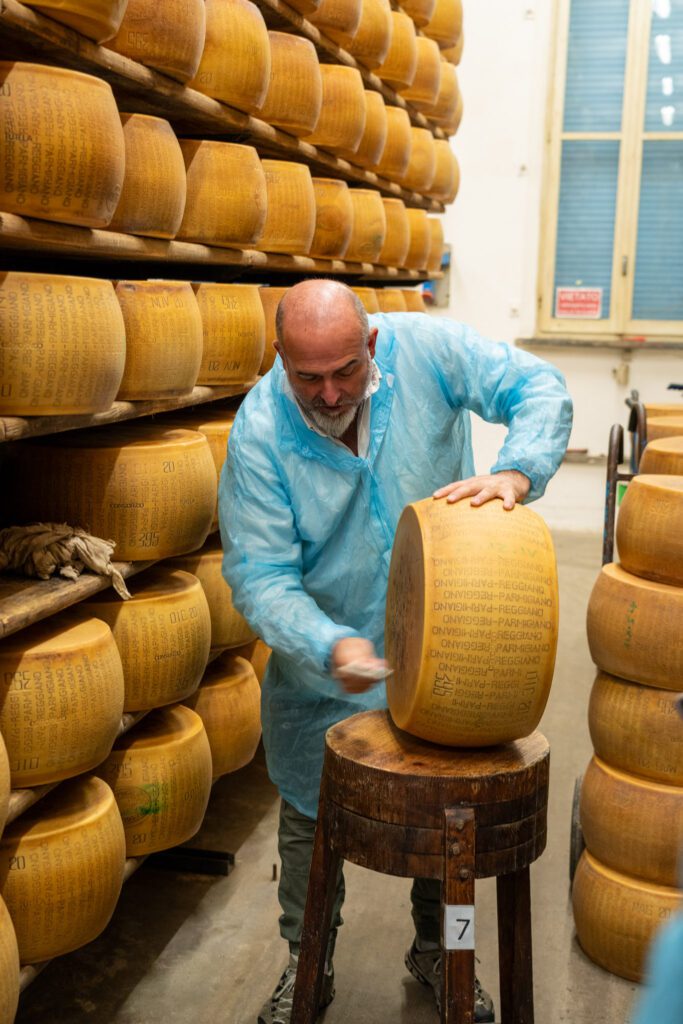
We wandered around a working factory, saw the cows that produce the milk, and got to taste various aged cheeses, as well as some other products from Emilia-Romagna like balsamic vinegar, prosciutto, and Lambrusco.
And we even went home with a vacuum-packed 500g portion of local cheese (which will last until you get home in our experience).
The tour starts from Reggio Emilia AV Station, which you can easily reach from Bologna in just 22 minutes by high-speed train (or slightly longer by slower regional train).
Take a Day Trip to Verona
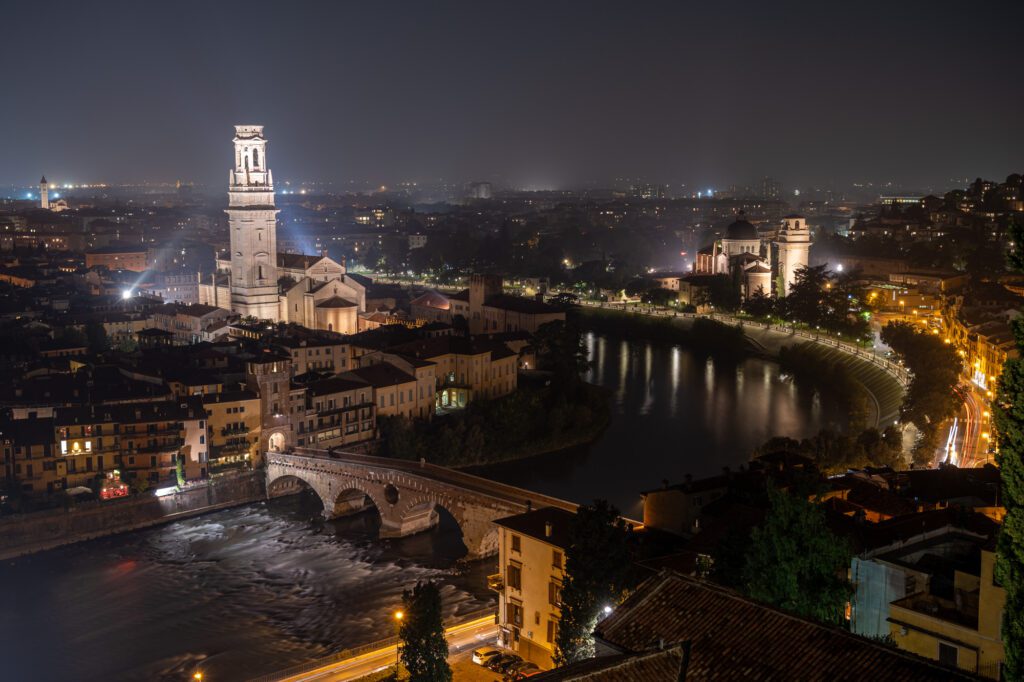
Located less than an hour away from Bologna by high speed train, Verona is another one of our favorite cities in Italy and a fantastic day trip destination.
One day in Verona is more than enough to see the city’s main attractions, including the huge Arena di Verona and hilltop Castel San Pietro. Plus you’ll still have time for a slow stroll along the Adige River and a glass of Prosecco in a beautiful piazza.
Verona is known as Italy’s “City of Love”, largely due to its connection to Shakespeare’s romantic tragedy, Romeo and Juliet.
And while it’s certainly a romantic little city, we feel obligated to note that Casa di Giulietta (Juliet’s House) is, quite possibly, the worst tourist attraction we’ve ever experienced.
Skip it. There are better ways to spend your day in Verona.
Take a Day Trip to Florence
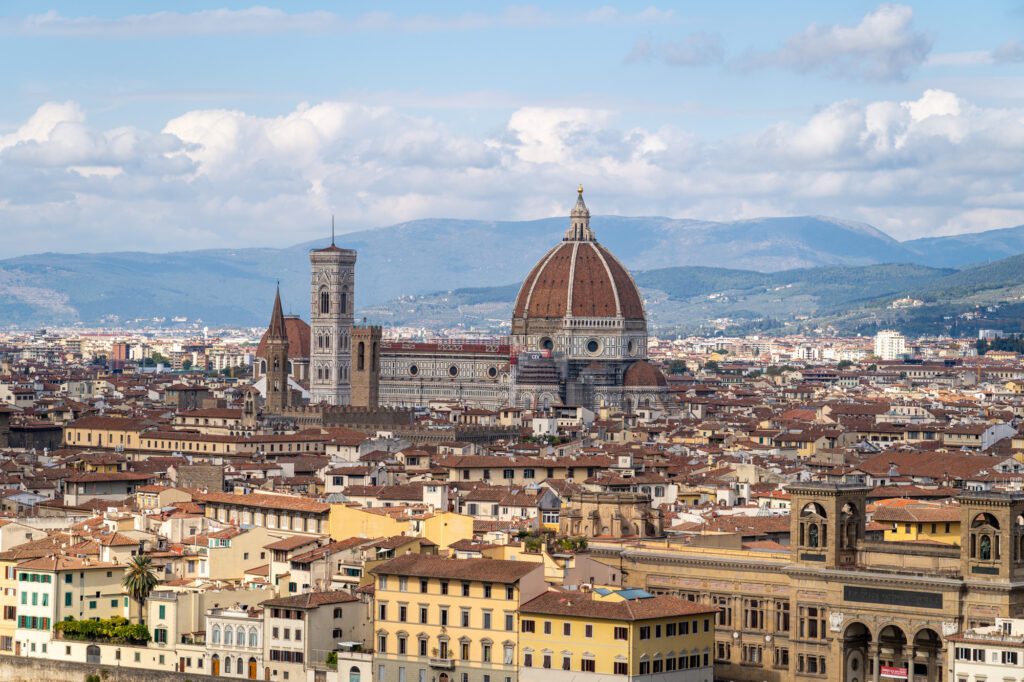
Another great day trip from Bologna is the iconic Tuscan capital of Florence, which sits just 35 minutes away by fast train.
While definitely a little (okay, a lot) busier than the likes of Bologna and Verona, Florence is a city that everyone should see at least once in their life. So why not use this opportunity to visit?
One day isn’t enough time to see everything Florence has to offer (2-3 days is better). However, you will still be able to see the main highlights within a day.
With one day in Florence, it’s going to be a busy one. We’d suggest starting with the Galleria dell’Accademia (for Michelangelo’s David) and the Duomo in the morning, before moving on to the Uffizi Gallery in the afternoon.
Finally, end your day at Piazzale Michelangelo for amazing views over the Tuscan city, before jumping on the train back to Bologna.
Catch a Bologna FC Match (Soccer / Football)

If you’re a fan of football/soccer, don’t miss the chance to see a Bologna FC game at the team’s historic 100-year-old stadium, Renato Dall’Ara. We went to see Bologna play during our last visit.
Bologna F.C. is currently in Italy’s Serie A, the country’s top division, which usually runs its season between late August and late May.
You can find a list of upcoming fixtures on the club’s website to see if there’s a game happening during your visit.
Tickets can be purchased at the visitor center on Piazza Maggiore, where they’ll help you buy and print them (I tried to do it myself and failed, and they were super helpful).
The stadium is located on the outskirts of the city and can be reached by local bus in around 10 minutes from the center (although we walked, and it was easy enough).
What to Do with Less Time in Bolonga
If you find yourself with less time, follow our one day Bologna itinerary, which compresses the above into one action (and food) packed day.
With one day, we’d recommend spending your morning seeing the sights of Piazza Maggiore, including Basilica di San Petronio, and climbing the Asinelli Tower.
Then use your afternoon to make the most of Bologna’s culinary scene on a food tour.
Getting Around Bologna
Like most smaller Italian cities, the best way to get around Bologna is by foot.
Bologna is a very walkable city. The majority of the main sites and attractions are located within 15-20 minutes of each other by foot.
The porticoes (covered walkways), which are something Bologna is famous for, offer some much-needed protection from the sun or rain while you’re wandering around.
We’d suggest doing the majority of the Bologna itinerary above on foot. But there is the option of using the bus (or tourist train) to reach some further out destinations such as the Sanctuary of the Madonna di San Luca.
Bologna has a good public bus network, with numerous lines and routes around the city. You can tap your credit card on the contactless payment kiosk on the bus to ride. We used Google Maps to see the bus schedules (although they don’t always exactly line up with said schedule).
More information on taking the bus in Bologna can be found here.
